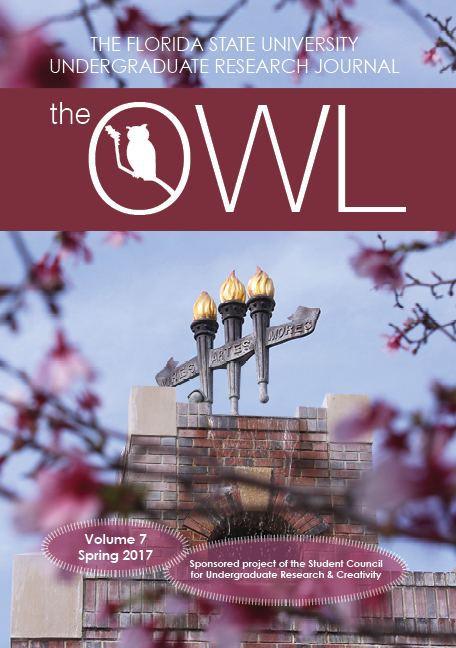Synchronization in FitzHugh-Nagumo Neuronal Networks
Keywords:
Neuron Dynamics, Neuronal Networks, FitzHugh-Nagumo NeuronsAbstract
Some of the most interesting neuroscience problems, fundamental to the field, are inherently mathematical. Central problems include understanding how cellular and network level mechanics of the peripheral and central nervous system coordinate to encode, process, and learn information, and how the Central Nervous System (CNS) is able to synchronize brain-wide neural activity. Answering these questions requires understanding how neuronal circuits react to stimuli and interact with one another to process information specific to their roles within a network. To simulate these intercellular dynamics, FitzHugh-Nagumo neurons were connected through incoming and outgoing voltage currents to form dynamic networks. External stimuli consisting of both excitatory and inhibitory signals were sent through the network. As the network’s connectivity coefficient increased, neurons began to synchronize. In some cases neuronal activity segregated and competed so that neither signal dominated the artificial network, underlining the importance of the relationship between signal and architecture in functional, biological circuits. Biological components which have been implicated in network synchronization, and how they could be mathematically implemented in future network simulations were discussed.
References
Works Cited
Boyce, William E., and Richard C. DiPrima. Elementary Differential Equations. 10th ed. New York: Wiley, 2012. Print.
Brunton, Bingni W., Lise A. Johnson, Jeffrey G. Ojemann, and J. Nathan Kutz. "Extracting Spatialâtemporal Coherent Patterns in Large-scale Neural Recordings Using Dynamic Mode Decomposition." Journal of Neuroscience Methods 258 (2016): 1-15. Web.
Byrne, John H. "Introduction to Neurons and Neuronal Networks | Section 1, Intro Chapter." Neuroscience Online. Department of Neurobiology and Anatomy, The UT Medical School at Houston, n.d. Web. 01 Jan. 2017. <http://neuroscience.uth.tmc.edu/s1/introduction.html>.
Clark, Christopher M., "Neural Orchestration of the C. elegans Escape Response: A Dissertation" (2014). University of Massachusetts Medical School. GSBS Dissertations and Theses. Paper 750. http://escholarship.umassmed.edu/gsbs_diss/750
Dayan, Peter, and L. F. Abbott. Theoretical Neuroscience: Computational and Mathematical Modeling of Neural Systems. Cambridge, MA: Massachusetts Institute of Technology, 2001. Print.
Eugene M. Izhikevich and Richard FitzHugh (2006) FitzHugh-Nagumo model. Scholarpedia, 1(9):1349., revision #123664
Fell, Juergen, and Nikolai Axmacher. "The Role of Phase Synchronization in Memory Processes." Nature Reviews Neuroscience 12.2 (2011): 105-18. Web.
Jr., Randy F. Stout, Alexei Verkhratsky, and Vladimir Parpura. "Caenorhabditis Elegans Glia Modulate Neuronal Activity and Behavior." Frontiers in Cellular Neuroscience 8 (2014): n. pag. Web.
Kunert, James, Eli Shlizerman, and J. Nathan Kutz. "Low-dimensional Functionality of Complex Network Dynamics: Neurosensory Integration in TheCaenorhabditiselegansconnectome." Physical Review E 89.5 (2014): n. pag. Web.
Kutz, Jose Nathan. Data-Driven Modeling & Scientific Computation: Methods for Complex Systems & Big Data. Oxford: Oxford UP, 2013. Print.
Lay, David C. Linear Algebra and Its Applications. Boston: Pearson/Addison-Wesley, 2006. Print.
Looxix. Neurone. Digital image. Wikimedia Commons. N.p., 19 Oct. 2003. Web.
Oberheim, N. A., T. Takano, X. Han, W. He, J. H. C. Lin, F. Wang, Q. Xu, J. D. Wyatt, W. Pilcher, J. G. Ojemann, B. R. Ransom, S. A. Goldman, and M. Nedergaard. "Uniquely Hominid Features of Adult Human Astrocytes." Journal of Neuroscience 29.10 (2009): 3276-287. Web.
Pajevic, S., P.j. Basser, and R.d. Fields. "Role of Myelin Plasticity in Oscillations and Synchrony of Neuronal Activity." Neuroscience 276 (2014): 135-47. Web.
Paolicelli, R. C., G. Bolasco, F. Pagani, L. Maggi, M. Scianni, P. Panzanelli, M. Giustetto, T. A. Ferreira, E. Guiducci, L. Dumas, D. Ragozzino, and C. T. Gross. "Synaptic Pruning by Microglia Is Necessary for Normal Brain Development." Science 333.6048 (2011): 1456-458. Web.
Purves D, Augustine GJ, Fitzpatrick D, et al., editors. Neuroscience. 2nd edition. Sunderland (MA): Sinauer Associates; 2001. Excitatory and Inhibitory Postsynaptic Potentials. Available from: https://www.ncbi.nlm.nih.gov/books/NBK11117/
Purves D, Augustine GJ, Fitzpatrick D, et al., editors. Neuroscience. 2nd edition. Sunderland (MA): Sinauer Associates; 2001. Neural Circuits. Available from: https://www.ncbi.nlm.nih.gov/books/NBK11154/
Wen, Quan, Michelle D. Po, Elizabeth Hulme, Sway Chen, Xinyu Liu, Sen Wai Kwok, Marc Gershow, Andrew M. Leifer, Victoria Butler, Christopher Fang-Yen, Taizo Kawano, William R. Schafer, George Whitesides, Matthieu Wyart, Dmitri B. Chklovskii, Mei Zhen, and Aravinthan D.t. Samuel. "Proprioceptive Coupling within Motor Neurons Drives C. elegans Forward Locomotion." Neuron 76.4 (2012): 750-61. Web.
Wikipedia contributors. "Hodgkin–Huxley model." Wikipedia, The Free Encyclopedia. Wikipedia, The Free Encyclopedia, 20 Jun. 2016. Web. 20 Jun. 2016.
Wikipedia contributors. "Synaptic plasticity." Wikipedia, The Free Encyclopedia. Wikipedia, The Free Encyclopedia, 9 Nov. 2016. Web. 9 Nov. 2016.
Wikipedia contributors, 'Neuron', Wikipedia, The Free Encyclopedia, 30 December 2016, 02:49 UTC, <https://en.wikipedia.org/w/index.php?title=Neuron&oldid=757334169> [accessed 30 December 2016]
Downloads
Published
Issue
Section
License
All works published in The Owl are published under a Creative Commons Attribution, Non-Commercial, Share-Alike (CC-BY-NC-SA) license. The author retains copyright.

